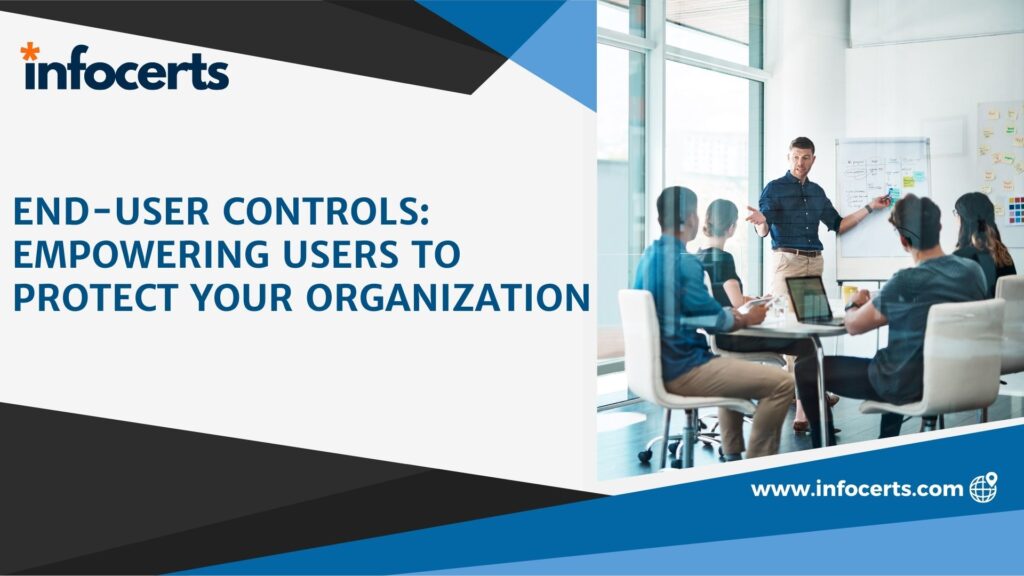In today’s interconnected digital landscape, internet security is paramount. One of the most crucial aspects of safeguarding your organization is empowering end-users with the knowledge and tools to protect against cyber threats. ISO 27032:2023 provides a comprehensive framework for enhancing internet security through end-user controls. This blog post delves into why end-user controls are essential, how to implement security awareness and training, the importance of securing devices and endpoints, and best practices for access control and authentication.
Why End-User Controls are Essential for Internet Security
End-users are often the first line of defense against cyber threats. They interact with various systems, networks, and data, making them prime targets for attackers. End-user controls play a critical role in mitigating risks such as:
- Phishing attacks
- Malware infections
- Data breaches
By empowering end-users with the right knowledge and tools, organizations can significantly reduce the likelihood of successful cyber-attacks.
Implementing End-User Security Awareness and Training
To foster a culture of security, organizations must invest in security awareness and training programs. These programs should cover:
- Phishing identification and reporting
- Safe internet browsing practices
- Password management techniques
- Recognizing and responding to social engineering tactics
Table: Key Components of Security Awareness Training
| Component | Description |
|---|---|
| Phishing Identification | Teach users to recognize and report phishing attempts |
| Safe Browsing Practices | Educate on secure internet usage and avoiding malicious sites |
| Password Management | Promote the use of strong, unique passwords |
| Social Engineering Awareness | Train users to detect and thwart social engineering attacks |
Regular training sessions and simulations can help reinforce these concepts, making security a second nature for employees.
Securing End-User Devices and Endpoints
Endpoint security is vital for protecting devices that access organizational networks. Measures to secure end-user devices include:
- Installing antivirus and anti-malware software
- Enabling firewalls
- Regularly updating and patching systems
- Implementing device encryption
Table: Best Practices for Securing End-User Devices
| Practice | Benefit |
|---|---|
| Antivirus & Anti-malware | Protects against malicious software |
| Firewalls | Blocks unauthorized access |
| Regular Updates & Patching | Fixes vulnerabilities in software |
| Device Encryption | Secures data in case of device theft or loss |
Incorporating these practices ensures that devices are robust against various cyber threats, thereby protecting sensitive data and organizational resources.
Best Practices for End-User Access Control and Authentication
Access control and authentication are fundamental to safeguarding sensitive information. Implementing robust access control mechanisms involves:
- Role-based access control (RBAC)
- Multi-factor authentication (MFA)
- Regular audits of access permissions
- Strong password policies
Table: Access Control and Authentication Best Practices
| Practice | Description |
|---|---|
| Role-based Access Control | Limits access based on user roles |
| Multi-factor Authentication | Adds an extra layer of security |
| Access Audits | Ensures permissions are appropriate and up-to-date |
| Strong Password Policies | Enforces the creation of secure passwords |
By adhering to these practices, organizations can ensure that only authorized individuals have access to critical systems and data.
Conclusion
Empowering end-users with the right knowledge and tools is a cornerstone of effective internet security. By following the guidelines and best practices outlined in ISO 27032:2023, organizations can create a robust security posture that protects against evolving cyber threats.
For IT professionals looking to enhance their knowledge and skills in end-user controls and internet security, enroll in our comprehensive ISO 27032:2023 course. Contact infocerts at +91 70455 40400 to learn more and register today.
Learn more about ISO 27032:2023 and enhance your security measures by visiting our detailed course page.
By prioritizing end-user controls, organizations not only protect their assets but also cultivate a culture of security awareness that permeates every level of the business.

